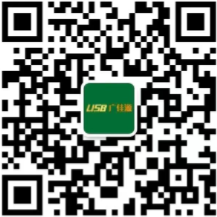 Mr. Chen:136-6225-2835
Mr. Chen:136-6225-2835
 Miss Chen:189-2385-0895
Miss Chen:189-2385-0895
Shenzhen Guangjiayuan Electronic Technology Co., Ltd
Mr. Chen: 136-6225-2835 (same WeChat account)
QQ: 979285705
Miss Chen: 189-2385-0895 (same WeChat account)
QQ: 2391552662
Chen Weiting :135-3824-4786 (same WeChat account)
Chen Weihao: 139-2459-4393 (same WeChat account)
Tel: 86-0755-33182327
Email: gjydz88@163.com
Website: www.usb-type.com
Address: Building 10, Hongxing Gebu Qixiang, Songgang Town, Bao'an District, Shenzhen, Guangdong Province
The USB interface can be said to be one of the interfaces we are most exposed to in our daily lives. Portable storage device, mobile phone, USB disk, keyboard and mouse, mobile power supply, and even some portable fans all use USB interface, although some focus on data transmission, and some only need power supply. It can be seen that USB interface is widely used.

1、 Nowadays, USB devices are widely used. In terms of version, most USB devices on the market are mainly based on either USB 2.0 or USB 3.0. Although USB 3.0 is naturally better at first glance, the presence of a large number of USB 2.0 devices in the market also indicates that there is still a great demand for it. For this reason, many consumers may also have some questions when purchasing: what are the differences between the USB 2.0 interface and the USB 3.0 interface? How should I choose? Today we will talk about this topic.

2、 Many old interfaces have been replaced by USB interfaces. Before understanding the difference between the two, let's briefly explain the origin of USB interfaces. USB, abbreviated as Universal Serial Bus in English, belongs to the interface technology standard and was jointly proposed by multiple companies such as Intel, Compaq, IBM, and Microsoft at the end of 1994. The USB interface is mainly used in the PC field to standardize the connection and data transmission between computers and external devices. One of its major features is plug and play, greatly improving the flexibility of devices.

3、 In 2000, with the emergence of the USB 2.0 standard, USB truly matured. Before the emergence of the familiar USB 2.0, there were two versions, USB 1.0 and USB 1.1, which were in the early stages of USB development and had very low speeds. Among them, the highest transmission speed of the USB 1.1 interface was only 12Mbps. At that time, there were very few devices that applied this interface, and only auxiliary devices such as keyboards and mice made the USB interface an optional option. It was not until the emergence of the USB 2.0 standard in 2000 that the USB truly matured. Not only did the transmission speed significantly improve, but there were also more and more devices supporting this interface.

After understanding the origin of the USB interface, let's talk about the differences between USB 2.0 and USB 3.0. Firstly, naturally, the most obvious speed aspect is that the theoretical maximum transmission rate of the USB 2.0 interface is 480Mbps, while the USB 3.0 speed is 5.0Gbps. Converted to our more commonly used units, namely 60MB/S and 625MB/S, the difference at first glance is more than ten times.
However, if we delve deeper, USB 3.0 adopts an 8b/10b encoding method, and only 8 out of every 10 bits of encoding are actual transmission data. Therefore, the theoretical speed of 625MB/S needs to be multiplied by 0.8, which is 500MB/S. However, Usb2.0 does not adopt this encoding method, and theoretically, all 60MB/S is actual data transmission. The speed difference between the two is actually 500/60=8.3 times, not even 10 times, but the difference is still significant.
In addition to the paper speed difference, USB 3.0 also adopts a full duplex data transmission method, which means it can synchronously perform read and write operations at full speed, while USB 2.0 only supports half duplex mode and is limited in read and write operations. As a result, USB 3.0 performs better in frequent and large data read and write situations.
In terms of power supply, USB 3.0 has also been strengthened. The power supply standard for the USB 2.0 interface is 5V/500mA, while the USB 3.0 interface power supply reaches 5V/900mA. This way, it can better support some high-power mobile devices. For example, some Portable storage device do not work well under the USB 2.0 interface, while the USB 3.0 interface will not have the problem of insufficient power supply. In addition, USB 3.0 also supports standby, hibernation, and pause states, which have better energy-saving effects compared to USB 2.0.
So, compared to USB 2.0, USB 3.0 has a theoretical speed difference of 8.3 times, and there has also been an improvement in power supply and energy conservation.

So, when we purchase the corresponding product, do we not buy it other than USB 3.0? In fact, it's not like this either. It should be based on actual usage and purchased on demand. For example, for USB drives, some people often need to transfer a large number of files, so naturally they should choose products with a USB 3.0 interface. And some only occasionally copy a few images or documents, with a small amount of data, so the USB 2.0 interface USB flash drive is actually sufficient and can save some money.
Another example is the USB HUB that people often buy now. If it is used to connect Portable storage device, copy video and other large files, it must use USB 3.0. If you just want to add a few interfaces to connect devices such as mice and keyboards, and occasionally insert a USB flash drive to copy some small files, then the USB 2.0 HUB is already sufficient and cost-effective.
Contact person:
Mr. Chen 136-6225-2835 (same WeChat account)
Miss Chen 189-2385-0895 (same WeChat account)
Chen Weiting 135-3824-4786 (same WeChat account)
Chen Weihao 139-2459-4393 (same WeChat account)
Address:
Building 10, Hongxing Gebu Qixiang, Songgang Town, Bao'an District, Shenzhen, Guangdong Province
 |
 |
| Technology 1 | Technology 2 |